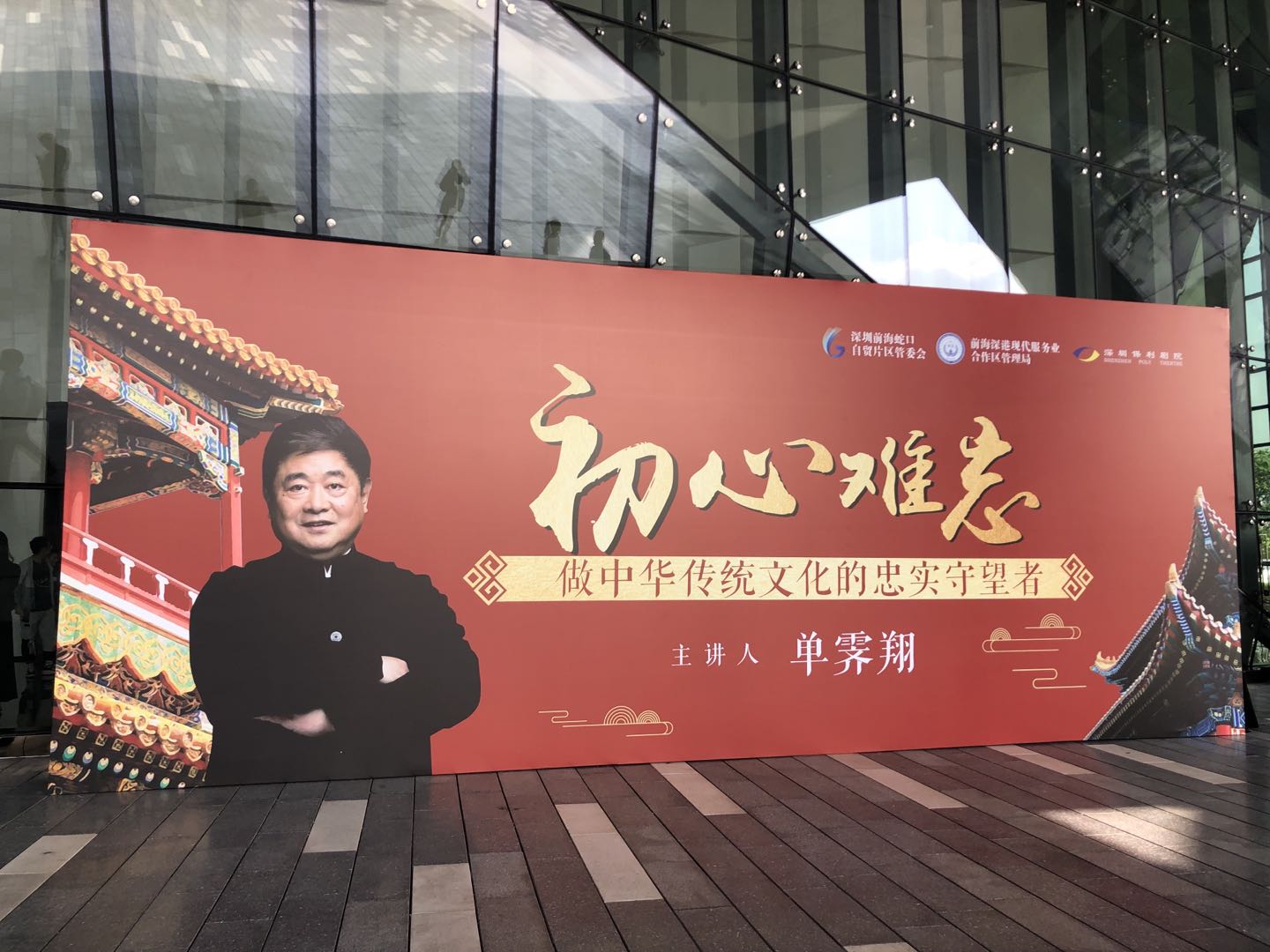
Public involvement was important in the protection of cultural relics, famed former Palace Museum curator Shan Jixiang told a large number of people who were attracted to the Vanke International Conference Center in Qianhai this morning for his lecture on the protection, preservation and innovation of traditional culture.
Shan, the sixth curator of the Palace Museum in Beijing, shared with the audience about his seven years of service at the country’s most famous museum since January 2012.
Tian Fu, member of the Standing Committee of the Shenzhen Municipal Committee of the CPC and director of the Authority of China (Guangdong) Pilot Free Trade Zone Qianhai & Shekou Area, Du Peng, director of the Qianhai Cooperation Zone Authority, and other officials attended the lecture, the fifth session of the “Qianhai Cultural Classroom” series.
Dubbed an online celebrity curator by millions of Chinese netizens, Shan told the audience that the traditional culture is best preserved when the general public is involved, opposed to simply constructing brick-and-mortar buildings to protect cultural relics from damage.
The Palace Museum, also known as the Forbidden City, used to be like a large warehouse for a variety of precious cultural relics that dated back several thousand years. Most of the Palace Museum was closed to the public until recent years, and many of the large numbers of precious cultural relics have been wrapped up and locked behind closed doors.

Shan took bold steps to renovate the world’s most-visited museum to better service its visitors. A facelift was conducted to turn several palaces in the imperial compound, which had been used as warehouses, into galleries. Shan took a set of terra-cotta warriors from Emperor Qin Shihuang’s mausoleum out of storage and had them put on public display at the Gallery of Sculpture. He designated a palace as Gallery of Furniture to showcase the tables and chairs used by the imperial families, which were previously off limits to the public.
He pulled down the illegal structures that pose fire hazards to the all-wood-structured buildings of the museum, and reclaimed all the houses around the museum that have been leased to private businesses and turned them into ticket offices, greatly shortening the lines to buy a ticket to visit the museum.
Shan, who called himself a doorkeeper of the Palace Museum, resorted to high technology to create interactive platforms for museum visitors.
Under Shan’s efforts, more than 80 percent of the Forbidden City became open to the public for visits in 2018. In 2012, only 30 percent of the museum was available to the public.
Shan’s open approach in the protection of cultural relics ignited public interest in the traditional culture and enhanced the public awareness of the protection of cultural relics.
A three-episode documentary on repairing cultural relics in the Palace Museum was rated 9.4 out of 10 points on Douban, one of the most influential websites on literature, music and movie reviews. “What touched me the most is that most of the likes (of the documentary) was given by young people, especially university students,” Shan said.
He said the recruitment of 88 heritage restorers for the Palace Museum this year attracted more than 40,000 applications. The more access to the traditional culture and cultural relics the public gained, the more interest in preserving them grew, which, Shan said, will have a positive effect on the protection of cultural relics.
Shan said all the staff of the Palace Museum aim to have all of the more than 1.86 million pieces of cultural relics put on public display when the Forbidden City celebrates its 600th anniversary next year.
